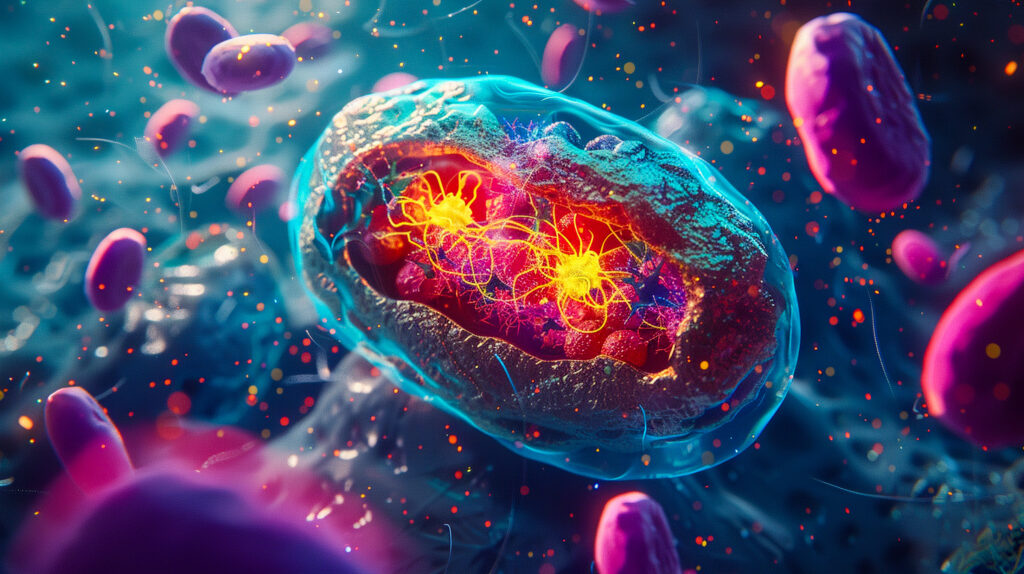The First Steps To Adopting A Healthy Lifestyle – Take Control Of Your Health Now
Adopting a healthy lifestyle can be intimidating at first, but with the right approach and mindset, it is an exciting journey filled with positive transformations. Imagine waking up everyday and looking forward to the adventure that awaits. We all have one shot at making this life the best it can be so let’s make it happen.
If you are struggling with health issues, the first step is to improve your lifestyle. Remember that Rome wasn’t built in a day and neither is a healthy lifestyle. Trying to completely overhaul your habits overnight is more than overwhelming and will likely lead to burnout before the next sunrise. Take it slow by focusing on making small lifestyle improvements that are sustainable in the long run.
The First Steps To Adopting A Healthy Lifestyle – Reduce Exposure To Toxins
Reducing exposure to toxins is an important step towards adopting a healthy lifestyle. Toxins are harmful substances that come from a variety of sources, such as the environment, food, and products we use on our bodies.
The First Steps To Adopting A Healthy Lifestyle – No More Pesticides
Conventionally grown fruits and vegetables often contain pesticides that are harmful to our health. Opting for organic produce significantly reduces exposure to these chemicals.
Also avoid using pesticides on your lawn or garden. Opting for natural pest control methods like essential oils or diatomaceous earth is a safer alternative.1
Read more about how pesticides affect health.
The First Steps To Adopting A Healthy Lifestyle – Avoid Toxic Cleaning Supplies
Many household cleaners contain toxic ingredients that negatively impact our health. Consider switching to natural alternatives or making your own cleaning products using simple ingredients like vinegar and baking soda.2
Read more about the toxins in cleaning products.
The First Steps To Adopting A Healthy Lifestyle – Stop Drinking Or Showing In Tap Water
Tap water contains a variety of contaminants, including chlorine, fluoride, and heavy metals. Using a quality water filter, ideally reverse osmosis, reduces exposure to these chemicals.3
Read more about the toxins in tap water.
The First Steps To Adopting A Healthy Lifestyle – Stop Using Toxic Personal Care Products
Most personal care products like shampoo, lotion, and makeup contain a long list of chemicals that are harmful to our health. Reading labels and choosing natural or organic options greatly decreases exposure to toxins.4
Read more about the toxins in personal care products.
The First Steps To Adopting A Healthy Lifestyle – Stop Eating Processed Foods
Processed foods are often loaded with artificial preservatives, additives, vegetable oils, and other chemicals that are harmful to our health. Choosing whole, unprocessed foods helps reduce the intake of these toxins.5
Read more about the toxins in processed foods.
The First Steps To Adopting A Healthy Lifestyle – Avoid Heavy Metals
One key aspect of adopting a healthy lifestyle is reducing exposure to heavy metals. Some of the most common heavy metals that we are exposed to include lead, mercury, cadmium, arsenic, and chromium.
Sources of mercury exposure include consuming contaminated fish or seafood, using certain skin lightening creams and cosmetics, and exposure to industrial chemicals that contain mercury.
Choosing organic options for fruits and vegetables also helps reduce exposure as they are grown without the use of harmful pesticides or fertilizers that often contain heavy metals.
In dentistry, mercury is commonly used in amalgam fillings, which are made of a combination of silver, tin, copper, and mercury. This mixture makes the filling durable and long-lasting, but it also releases mercury vapor into the brain over time.6
My Battle With Mercury Poisoning
When I was 34, I developed a number of strange health conditions like brain fog, anxiety, irritability, fatigue, digestive problems, and multiple chemical sensitivity. Nothing added up, as I was exercising constantly, eating clean, and operating my chiropractic business.
I decided to stop training for a couple of weeks because I assumed that overtraining was resulting in these health issues. However, this break from exercise didn’t change anything. I was forced to look deeper into the cause of my health symptoms, sending me down a long rabbit hole that brought me to where I am today.
After performing nearly every blood test available, everything appeared normal. After researching every potential problem under the sun, I had a suspicion that mercury poisoning was behind my mysterious illness. However, blood tests indicated that I wasn’t suffering from mercury toxicity.
I talked to every doctor I knew and an excellent endocrinologist told me that he thought mercury toxicity was behind my health problems. If mercury is released slowly into the body over the course of years and decades, it doesn’t show up in blood tests and instead accumulates in nervous tissue, specifically the brain.
For me, my symptoms started after I had silver amalgam fillings that contain mercury improperly removed which released a significant amount of mercury into my brain. This followed decades of mercury slowly vaporizing off my fillings and mercury exposure from contact lens solution.
When mercury accumulates in the hypothalamus, the endocrine system loses its connection with the control tower that regulates it. This throws off the feedback cycle that regulates hormone function throughout the body including thyroid hormone. In my case, I was suffering from thyroid issues due to hypothalamus dysfunction.7
The Perfect Storm Behind Mysterious Symptoms
It wasn’t only the mercury accumulation that caused me to become ill, but rather, a combination of different factors that I refer to as the perfect storm. In addition to mercury toxicity, mold exposure from an old house I was living in, the stress of running a chiropractic business, and excessive physical training overwhelmed me and my proverbial bucket of stressors overflowed.
What I mean by that is our bodies can overcome one or two stressors without developing physical symptoms, as the bucket that holds stressors can contain them. However, when there are too many stressors all at once, the bucket overflows, causing strange illnesses and mysterious symptoms.
In addition to avoiding stressors, I had to upregulate my cellular function and optimize cellular detoxification pathways so I could excrete mercury and other toxins from my cells. This process was how I got myself well and developed my 5Rs method to help others with similar health issues.
Listen in to my free webinar for more details on my 5Rs so you can get to the core reasons behind your health issues.

The First Steps To Adopting A Healthy Lifestyle – Eat Right
My Cellular Healing Diet focuses on consuming organic, whole foods. This type of eating closely resembles what humans have consumed for centuries before the advent of processed foods. This diet promotes proper cellular membrane function and supports overall health.
A nutritionally-balanced diet incorporates animal-based foods such as grass-fed meat, fish, and grass-fed dairy. These foods provide essential nutrients like protein and healthy fats. Additionally, plant-based options like olive oil, vegetables, nuts, seeds, beans, and low glycemic fruits add diversity and important vitamins and minerals to the overall diet. Including a variety of both animal and plant-based foods is essential for optimal health and well-being.
The First Steps To Adopting A Healthy Lifestyle – Diet Variation
We often fall into the habit of sticking to familiar and comfortable foods in our diets. However, this routine may lead to nutritional deficiencies and health problems. Diet variation is a healthier option. By incorporating a diverse range of food choices, we ensure that our bodies are receiving all the necessary nutrients for overall health and well-being.
Our bodies require a variety of vitamins, minerals, and macronutrients (carbohydrates, protein, and fat) to function properly. When we constantly eat the same foods, we limit the essential nutrients our bodies need. Moreover, our bodies have evolved to adapt to different food sources, so sticking to a strict diet may cause sensitivities or intolerances to certain foods.
Changing up our diets means incorporating days with high protein intake, other days with high fat consumption, and some days with a higher percentage of carbohydrates. Such variation keeps the body guessing and adapting to the different types of food we consume.
A high protein diet involves consuming a larger portion of calories from protein sources such as grass-fed meats, eggs, dairy products from grass-fed animals, and nuts. By including a day dedicated to high protein intake in our diet variation plan, we provide the body with essential amino acids to help build and repair tissue. However, it is important to note that a high protein diet should be consumed in moderation as research has linked it to premature aging.
A high fat diet consists of consuming a higher percentage of calories from healthy fats such as avocados, nuts, olive oil, grass-fed butter, and fatty fish. By incorporating a day focused on high fat consumption into our diet variation plan, we introduce a different energy source to our bodies.

On days with a high carbohydrate intake, we consume a larger percentage of calories from sources like fruits and starchy vegetables. These foods provide quick energy to fuel physical activity and are important components of a well-rounded diet variation plan.8
The First Steps To Adopting A Healthy Lifestyle – Fasting
Intermittent fasting and water fasting are a part of a healthy lifestyle. Intermittent fasting involves cycling between periods of eating and fasting, with different methods such as the 16/8 method or my 4-2-1 diet.
The 16/8 method involves restricting eating to an 8-hour window each day. However, constantly intermittent fasting eventually signals the body it is starving to death. This causes it to store fat so it can save energy while catabolizing muscle to fuel metabolism.9
This is why I recommend diet variation with a feast and famine cycle instead of sticking with intermittent fasting exclusively. My 4-2-1 diet involves intermittent fasting for 4 days, feasting 2 days, and water fasting for 1 day each week.10
It’s important to ease into fasting, especially if you’re not used to going long periods of time without food. Start by gradually increasing the length of your fasting periods until you reach a comfortable level.
The First Steps To Adopting A Healthy Lifestyle – Exercise
The thought of exercising regularly may seem daunting at first, especially if you have never incorporated it into your routine before. However, starting small and staying consistent is key to building a sustainable exercise regimen.
Begin with low-intensity activities such as walking, jogging, or swimming for 30 minutes, three times a week. Gradually increase the duration and intensity of your workouts as you build stamina and strength. Then, start performing HIIT exercise, as short bursts of high intensity exercise offer the greatest health benefits.11
Consistency is crucial when it comes to exercise. Aim to incorporate physical activity into your daily routine, whether it’s going for a brisk walk during lunch break or doing a quick at-home workout in the morning. Remember that every little bit counts towards leading a more active lifestyle. Exercise shouldn’t be something you dread. Finding activities that you genuinely enjoy makes it a pleasure to stick to a regular routine.

The First Steps To Adopting A Healthy Lifestyle – Team Up
Adopting a healthy lifestyle is easier when you have someone to hold you accountable. Find a friend or family member who shares similar goals and make a plan to support each other. You can exercise together, meal prep together, or simply check in with each other regularly. Having an accountability partner also provides motivation and makes the journey more enjoyable.
The First Steps To Adopting A Healthy Lifestyle – Work With A Coach
In addition to targeting sources of toxicity, crafting a healthy lifestyle, and removing toxins from the body, the coaches from the Pompa Program are always around to keep you motivated. The power to adopt a healthy lifestyle is in your hands and we are there to support you every step of the way.
To learn even more about adopting a healthy lifestyle and removing toxins from the cells with my 5Rs, join me in my free webinar or read about what is driving the obesity crisis.
References
1 Nicolopoulou-Stamati P, Maipas S, Kotampasi C, Stamatis P, Hens L. Chemical Pesticides and Human Health: The Urgent Need for a New Concept in Agriculture. Front Public Health. 2016 Jul 18;4:148. doi: 10.3389/fpubh.2016.00148. PMID: 27486573; PMCID: PMC4947579.
2 Cleaning products emit hundreds of hazardous chemicals, new study finds. (2023, September 13). Environmental Working Group. https://www.ewg.org/news-insights/news-release/2023/09/cleaning-products-emit-hundreds-hazardous-chemicals-new-study
3 Luntz, T. (2009, December 14). U.S. Drinking Water Widely Contaminated. Scientific American. https://www.scientificamerican.com/article/tap-drinking-water-contaminants-pollutants/
4 Lin RR, Lin DA, Maderal AD. Toxic Ingredients in Personal Care Products: A Dermatological Perspective. Dermatitis. 2024 Mar-Apr;35(2):121-131. doi: 10.1089/derm.2023.0215. Epub 2023 Dec 18. PMID: 38109205.
5 Lustig RH. Ultraprocessed Food: Addictive, Toxic, and Ready for Regulation. Nutrients. 2020 Nov 5;12(11):3401. doi: 10.3390/nu12113401. PMID: 33167515; PMCID: PMC7694501.
6 Witkowska D, Słowik J, Chilicka K. Heavy Metals and Human Health: Possible Exposure Pathways and the Competition for Protein Binding Sites. Molecules. 2021 Oct 7;26(19):6060. doi: 10.3390/molecules26196060. PMID: 34641604; PMCID: PMC8511997.
7 Zhu X, Kusaka Y, Sato K, Zhang Q. The endocrine disruptive effects of mercury. Environ Health Prev Med. 2000 Jan;4(4):174-83. doi: 10.1007/BF02931255. PMID: 21432482; PMCID: PMC2723593.
8 Abdelhamid A, Jennings A, Hayhoe RPG, Awuzudike VE, Welch AA. High variability of food and nutrient intake exists across the Mediterranean Dietary Pattern-A systematic review. Food Sci Nutr. 2020 Jul 29;8(9):4907-4918. doi: 10.1002/fsn3.1784. PMID: 32994952; PMCID: PMC7500794.
9 Williamson E, Moore DR. A Muscle-Centric Perspective on Intermittent Fasting: A Suboptimal Dietary Strategy for Supporting Muscle Protein Remodeling and Muscle Mass? Front Nutr. 2021 Jun 9;8:640621. doi: 10.3389/fnut.2021.640621. PMID: 34179054; PMCID: PMC8219935.
10 Hazzard VM, Loth KA, Crosby RD, Wonderlich SA, Engel SG, Larson N, Neumark-Sztainer D. Relative food abundance predicts greater binge-eating symptoms in subsequent hours among young adults experiencing food insecurity: Support for the “feast-or-famine” cycle hypothesis from an ecological momentary assessment study. Appetite. 2023 Jan 1;180:106316. doi: 10.1016/j.appet.2022.106316. Epub 2022 Sep 24. PMID: 36167172; PMCID: PMC9808920.
11 Atakan MM, Li Y, Koşar ŞN, Turnagöl HH, Yan X. Evidence-Based Effects of High-Intensity Interval Training on Exercise Capacity and Health: A Review with Historical Perspective. Int J Environ Res Public Health. 2021 Jul 5;18(13):7201. doi: 10.3390/ijerph18137201. PMID: 34281138; PMCID: PMC8294064.
Disclaimer: All rights reserved. Information provided is for general purposes and not intended to provide medical advice, diagnosis, or treatment. Consult your healthcare professional for medical concerns. About Dr. Pompa




